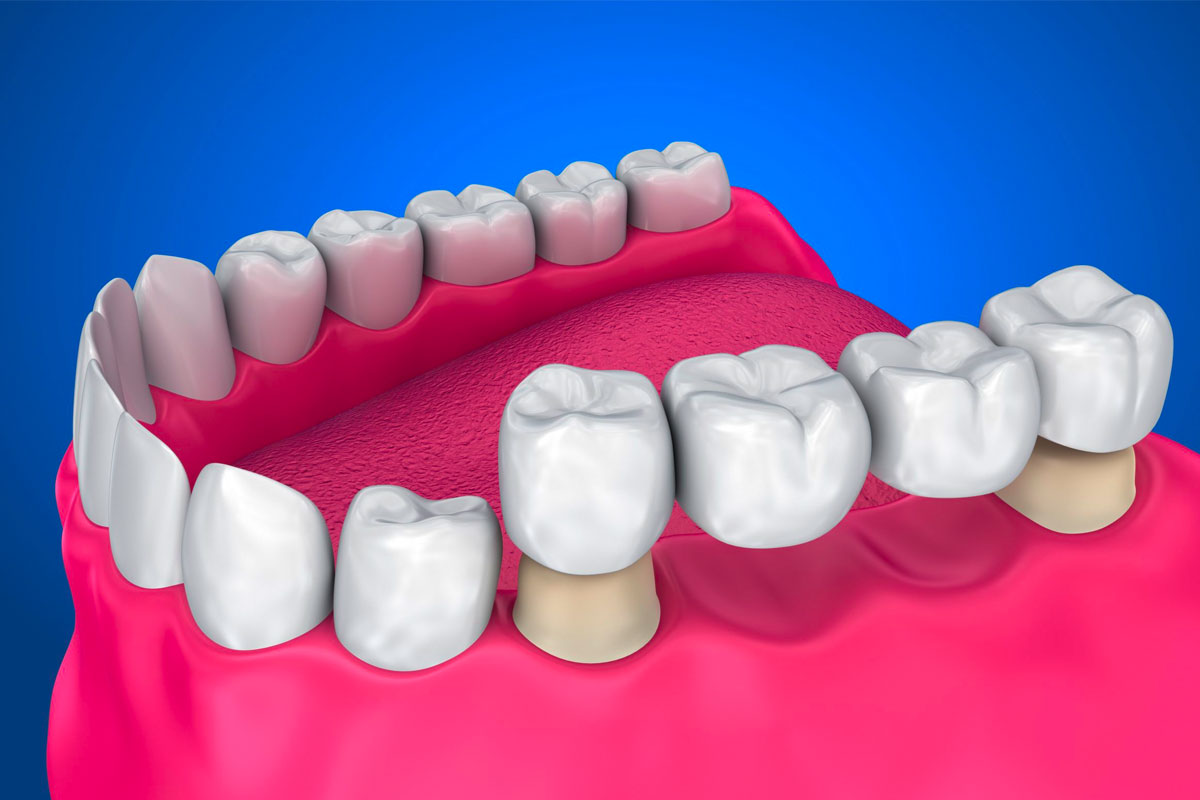Having a bright, confident smile is incredibly satisfying. What’s even more fulfilling is knowing that you can maintain it. Dental bridges are essential for restoring both the function and beauty of your smile. They give you the confidence to engage in everyday activities without any worries. With these innovative dental solutions, you can enjoy your meals, communicate effortlessly, and relish laughter without any constraints.
What are Dental Bridges?
Dental bridges are like custom-made prosthetic teeth that fill the gaps when you have one or more missing teeth. These prosthetic teeth, called pontics, are carefully made to match your natural teeth in colour, shape, and size. They are then securely anchored to your nearby natural teeth or dental implants to seamlessly blend with your smile.
Benefits of Dental Bridges
Dental bridges provide numerous benefits for people with missing teeth:
- Improved Appearance: Dental bridges enhance your smile by filling gaps left by missing teeth. They are designed to match your natural teeth, improving your overall facial appearance.
- Restored Chewing Ability: Missing teeth can make it challenging to eat a variety of foods. Dental bridges restore your ability to bite and chew, expanding your dietary options and overall nutrition.
- Better Speech: Gaps from missing teeth can affect your speech. Dental bridges help you speak more clearly and confidently.
- Prevents Tooth Shifting: When a tooth is missing, nearby teeth may shift, leading to alignment issues. Dental bridges maintain the alignment of your natural teeth by filling the gap.
- Easier Oral Care: Dental bridges simplify oral hygiene by closing the gap, reducing the risk of food particles getting trapped, which can cause decay and gum problems.
- Long-Lasting: With proper care, dental bridges can last for many years, providing a durable solution for missing teeth.
- Quick and Minimally Invasive: Getting a dental bridge usually involves minimal discomfort and does not require surgery, unlike some other tooth replacement options.
- Cost-Effective: Dental bridges are often a cost-effective choice compared to other tooth replacement options, making them accessible to a wide range of people.
The Procedure for Getting Dental Bridges
Getting dental bridges involves several steps:
- Consultation: You start by talking to your dentist to figure out the best plan for your needs.
- Assessment and Planning: During your first visit, your dentist checks your mouth to see if dental bridges will work for you. They might use X-rays and tooth impressions to plan your treatment. Your dentist also helps you choose the right type of bridge.
- Preparing Teeth: If you go for a traditional bridge, your dentist gently removes a bit of enamel from the neighbouring teeth next to the gap. It’s done with local anaesthesia, so you won’t feel any pain. Afterward, they take impressions of your teeth and send them to a lab where they make your custom bridge.
- Temporary Bridge: While your permanent bridge is being made, your dentist puts a temporary one in place to protect your prepared teeth and keep your smile looking good. Temporary bridges are made of acrylic and aren’t as strong as the permanent ones. Your dentist will give you care instructions during this time.
- Permanent Bridge: Once your custom bridge is ready, you go back to your dentist’s office for the final step. They remove the temporary bridge and check how well the permanent one fits and looks. If needed, they make adjustments to make sure it’s a perfect fit before cementing it in place. Your dentist ensures it feels comfy and your bite is just right.
- Follow-up Visits: After your bridge is in, you might need more visits to ensure everything is working well and you’re adjusting to it. Your dentist will also give you care instructions and may suggest regular check-ups to keep an eye on your bridge and your overall oral health.
Aftercare and Maintenance
To keep your dental bridge in good shape, follow these easy tips:
- Keep Your Mouth Clean:
- Brush your teeth gently twice a day with a soft toothbrush and fluoride toothpaste.
- Be sure to clean around the bridge to prevent food or plaque buildup.
- Use floss daily, using special tools if needed, to clean between the bridge and your other teeth.
- Watch Your Food Choices:
- Avoid hard or sticky foods that could harm or loosen the bridge.
- Choose softer foods and cut them into smaller pieces to lessen the stress on the bridge.
- Regular Dentist Visits:
- Visit your dentist regularly for check-ups to ensure your bridge and overall oral health stay in good shape.
- Your dentist will keep an eye on the bridge, clean your teeth professionally, and address any issues that come up.
- Protect During Sports:
- If you play sports that could lead to mouth injuries, like contact sports, use a mouthguard.
- A mouthguard adds extra protection and lowers the risk of harming your dental bridge.
How Long Do Dental Bridges Last?
Dental bridge lifespans vary but can usually endure 5 to 15 years or longer with proper care, influenced by bridge type, oral hygiene, and dental check-ups. Regular dental visits play a key role in early issue detection and maintenance.
Richmond Dental Centre Accepting New Patients
Are you looking for a local dentist in the city of Richmond? The Dental Professionals at Richmond Dental Centre welcomes walk-ins, emergencies & new patients! Give us a call at (604) 273-3368 to schedule a dental appointment.







